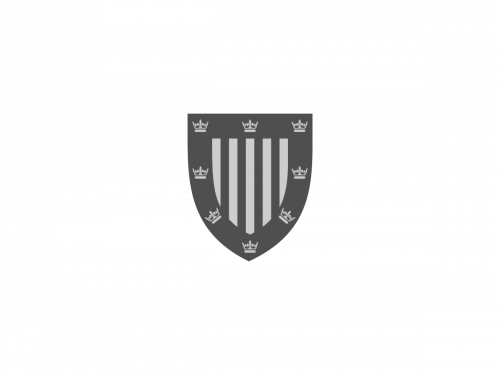
Breadcrumb
Professor Sir John M. Thomas, ScD, FRS, FREng, FRSE Master of Peterhouse 1993-2002
It is with great sadness that the College shares the news of the death of our former Master, Sir John Meurig Thomas, who passed away earlier today, Friday 13 November 2020.
Sir John was a distinguished chemist, renowned for his work in the science of catalysts and solid state chemistry. As well as serving as Master of Peterhouse 1993-2002, he held positions as Head of the Department of Physical Chemistry in Cambridge, Director of the Royal Institution of Great Britain and of the Davy Faraday Research Laboratories London. He was the recipient of numerous prizes and honours for his work, and received a knighthood in 1991.
Right up until very recently Sir John was a regular presence in the College and an active member of the community, despite his failing health. His most recent publication ‘Architects of Structural Biology’, celebrating the work of four Nobel Scientists, all pioneers in structural biology (and two of them –John Kendrew and Max Perutz- also members of Peterhouse) was published earlier this year in February 2020.
Our thoughts are with his family and friends at this sad time. We shall all miss him very much.
Bridget Kendall
A Tribute to Sir John Meurig Thomas by Professor Adrian Dixon with contributions from Dr Pattenden, Professor Calladine, Professor Jackson, Professor Jones:
Sir John Meurig Thomas (1932-2020), PhD, ScD, FRS, FLSW, Hon FREng, Hon FRSE, FRMS was Master of Peterhouse 1993-2002 and an Honorary Fellow thereafter. Known to one and all as JMT, he succeeded Henry Chadwick as Master and, as one of the leading scientists in the UK, greatly stimulated the scientific community of the College, especially by frequent attendance at the Kelvin Club. During his tenure he set up the Development Office which has successfully secured funds for the Ward Library, the Gunn Gallery and the new Whittle building. Current Petreans will be familiar with his bust on permanent display in the Library. As Master he greatly raised the profile of women in the Fellowship and reinvigorated the musical side of the College. His prodigious memory held a fund of anecdotes which were greatly appreciated by everyone at various College functions.
He received a plethora of awards: over 20 honorary degrees and countless honorary memberships of learned societies (including the American Philosophical Society and the American Academy of Arts and Sciences). He was knighted in 1991 for services to chemistry and the popularisation of science. In 2016, the Royal Society awarded him the Royal Medal for his pioneering work within catalytic chemistry. Few scientists have had a mineral (Meurigite) named in their honour!
He was born in Carmarthenshire near Llanelli; both his father and brother were miners. Following a BSc at the University College of Wales, he pursued a PhD in solid-state chemistry at Queen Mary College, London. Moving to Aberystwyth, he pioneered the use of electron microscopy to examine the surface topography of many minerals and crystal hydrates, becoming a Professor in 1969. In 1978 he became head of Physical Chemistry at Cambridge (and a Fellow of King’s) where his team continued his work on catalysis using high-resolution electron microscopy and NMR. He held some thirty patents, many of which made chemical processes “greener"; his method of synthesising ethyl acetate was adopted on an industrial scale.
In 1986 he succeeded Sir George Porter as Director of the Royal Institution in London where he held the Michael Faraday chair and Directorship of the Davy Faraday Research Laboratory. While there he helped develop new catalysts for green chemistry and clean technology. As Director he revitalised the evening discourses and the famous Christmas Lectures. He became Deputy Pro-Chancellor of the University of Wales before returning to Cambridge as Master of Peterhouse in 1993.
He authored over 1,000 scientific articles and, in retirement as an Honorary Professor of Materials Science in Cambridge, he wrote and edited numerous books, including Michael Faraday and the Royal Institution: The Genius of Man and Place and Principles and Practice of Heterogeneous Catalysis. A recent book of his, Architects of Structural Biology, discusses the influence of distinguished molecular biologists within the College (including Perutz, Kendrew and Klug). He remained scientifically active throughout his retirement, recently co-authoring a Nature Catalysis paper on a new process for directly converting hydrocarbons into pure hydrogen and solid carbon.
In 1959, Thomas married Margaret Edwards with whom he had two daughters, Lisa and Naomi. Margaret Thomas sadly died in 2002 and her prolonged illness coincided with his tenure as Master. Nevertheless, they managed to oversee a highly successful transformation of the Master’s Lodge. In 2010, Thomas married Jehane Ragai, Professor of Chemistry at the American University in Cairo.
A devout and charismatic Welshman, he was a regular attender at Chapel and helped introduce Services in Welsh on St David’s Day. He was particularly proud of being the first scientist to be awarded the Medal of the Honourable Society of Cymmrodorion and of being honoured with membership of the Gorsedd of Bards of the National Eisteddfod of Wales for his distinguished contribution to the Welsh nation. He never missed a Welsh Rugby International either in Cardiff or on television.
16 November 2020

